
Private Perforations on U.S. Vending and Affixing Machine Coil Stamps 1907-1927
1906-1908 Imperforate from the Designs of the Series of 1902 - Flat Plate
Attleboro Brinkerhoff International Vending Machine Mailometer Schermack U.S. Automatic Vending
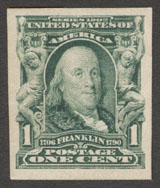
1¢ Imperforate
Number314
Schermack I with 6, 7 or 8 holes
Schermack II, III
USAV Ia, Ib, II, III
Brinkerhoff I, II, IIa, IIb
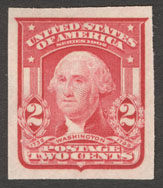
2¢ Imperforate
Number 320
Schermack I (6, 7 or 8)
USAV Ia,Ib,II,III
Schermack II, III
Mailometer I, Ia, II, III, IV
Int'l Vending Machine
Brinkerhoff I, II, IIa, IIb
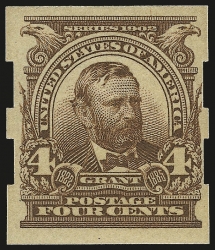
4¢ Imperforate
Number 314A*
Schermack: III only
*Courtesy Siegel 968B
unknown without Schermack III perforations

5¢ Imperforate
Number 315
Schermack I (8 holes)
Schermack II, III
USAV Ia, II, III
1908-1910 Imperforate Flat Plate Double-line Watermarked Washington-Franklins
Attleboro Brinkerhoff Farwell Mailometer Schermack U.S. Automatic Vending
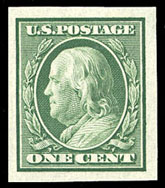
1¢ Imperforate
Number 343
Schermack I (8),II,III
USAV Ia,Ib,II,III
Farwell 4A4, 4B4
Brinkerhoff I,II,IIa,IIb
Mailometer I, Ia, II, III, IV
Attleboro I
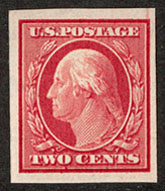
2¢ Imperforate
Number 344
Schermack I (8),II,III - USAV Ia,Ib,II,III
Farwell 4A4, 4B4 - Brinkerhoff I,II,IIa,IIb
Mailometer I, Ia, II, III, IV - Attleboro I
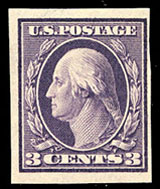
3¢ Imperforate
Number 345
Schermack I (8),II,III - USAV Ia,Ib,II,III
Mailometer I, Ia, II, III, IV
Brinkerhoff I, II, IIa, IIb
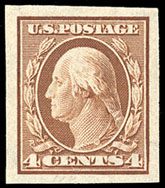
4¢ Imperforate
Number 346
Schermack I (8),II,III
USAV Ia,Ib,II,III
Mailometer I, Ia, II, III, IV
Brinkerhoff I, II, IIa, IIb
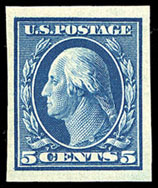
5¢ Imperforate
Number 347
Schermack I (8),II,III
USAV Ia,Ib,II,III
Mailometer I, Ia, II, III, IV
Brinkerhoff I, II, IIa, IIb
1909 Flat Plate Imperforate Commemoratives
Brinkerhoff Farwell Mailometer Schermack U.S. Automatic Vending
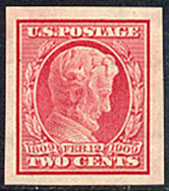
2¢ Lincoln
Number 368
Schermack I with 6, 7 or 8 holes
Schermack II, III
USAV Ia, Ib, II, III
Farwell 4A4, 4B4
Mailometer Ia, II, III, IV
Brinkerhoff I, II, IIa, IIb
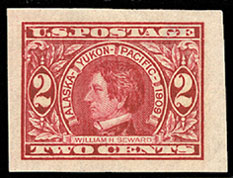
2¢ Alaska-Yukon
Number 371
Schermack III
Mailometer Ia, II, III, IV
Attleboro I vertical perforations
USAV Ia, Ib, II, III
Brinkerhoff I, II, IIa
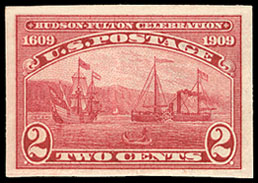
2¢ Hudson Fulton
Number 373
Schermack III
Mailometer Ia, II, III, IV
USAV II, III
Brinkerhoff II
1910-1912 Imperforate Flat Plate Single-line Watermarked Washington-Franklins
Brinkerhoff Farwell Mailometer Schermack U.S. Automatic Vending
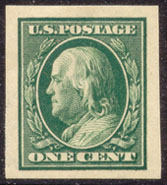
1¢ Imperforate
Number 383
Schermack II, III
Mailometer I, Ia, II, IV, V
Farwell 2B3, 3A2, 3B4, 4B3, 4A4, 4B4, 4A5
USAV Ia, Ib, II, III
Brinkerhoff I, II, IIa, IIb
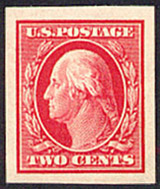
2¢ Imperforate
Number 384
Schermack II, III
Mailometer I, Ia, II, IV, V
Farwell I,2A3, 2B3, 3A2, 3B2, 3B4, 4B3, 4A4, 4B4, 4A5
USAV Ia, Ib, II, III
Brinkerhoff II, IIa, IIb
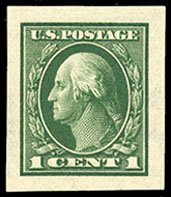
1¢ Imperforate
Number 408
Schermack III
Mailometer Ia, IV
Farwell 4A4, 4B4, 4A5, 5A4
USAV Ia, Ib, II, III
Brinkerhoff I, II, IIa, IIb
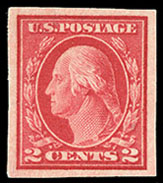
2¢ Imperforate
Number 409
Schermack III
Mailometer Ia, IV
Farwell 4A4, 4B4, 4A5, 5A4
USAV Ia, Ib, II, III
Brinkerhoff I, II, IIa, IIb
1916-1917 Imperforate Flat Plate Unwatermarked Washington-Franklins
Farwell Mailometer Schermack
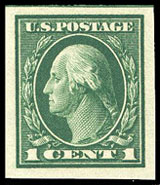
1¢ Imperforate
Number 481
Schermack III
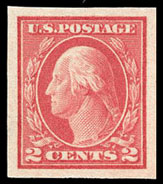
2¢ Type I
Number 482
Schermack III
Mailometer IV
Farwell 4A4, 4B4
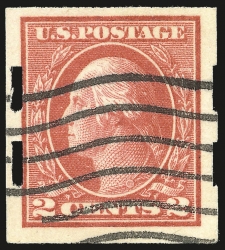
2¢ Type Ia
Number 482A
Courtesy 2009 Siegel Rarities
Schermack III
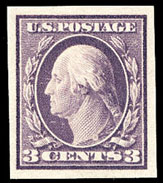
3¢ Type I
Number 483
Schermack III
Mailometer IV
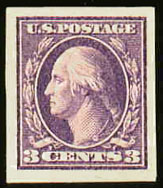
3¢ Type II
Number 484
Schermack III
1918-1919 Offset Imperforate Washington-Franklins
Schermack
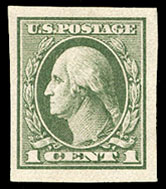
1¢ Imperforate
Number 531
Schermack III
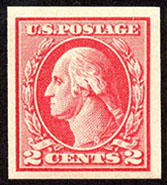
2¢ Type IV
Number 532
Schermack III
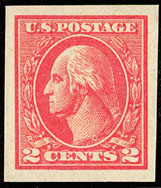
2¢ Type V
Number 533
Schermack III
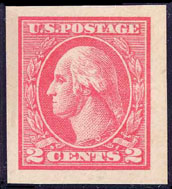
2¢ Type Va
Number 534
Schermack III
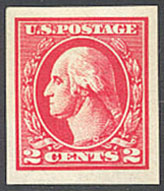
2¢ Type VI
Number 534A
Schermack III
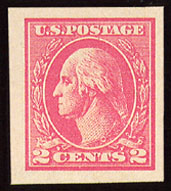
2¢ Type VII
Number 534B
Schermack III
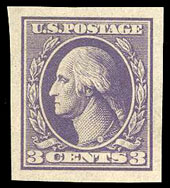
3¢ Type IV
Number 535
Schermack III
1923-1925 Flat Plate Imperforates - Series of 1922
Schermack
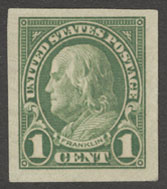
1¢ Imperforate
Number 575
Schermack III
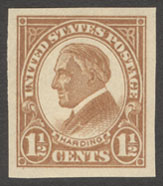
1½¢ Imperforate
Number 576
Schermack III
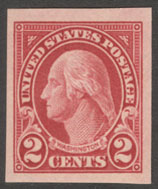
2¢ Imperforate
Number 577
Schermack III
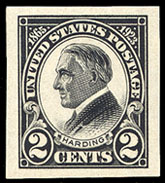
2¢ Black Harding
Schermack III
Private Perforations Applied to U.S. Government Issued Stamps
Attleboro Perforations 1909
The Attleboro type I perforation runs across the entire margin separated by two narrow 1.1mm to 1.3mm strips. The central oblong/rectangular hole is 13mm wide by 1.5 to 1.8mm high with a V-shaped notch at top. Only three issues of U.S. stamps are known with this perforation, the double-line watermarked 1908 1¢ and 2¢ stamps, Scott 343 and 344, with horizontal perforations and the 1909 double-line watermarked 2¢ Alaska-Yukon commemorative, Number 371, with vertical perforations.
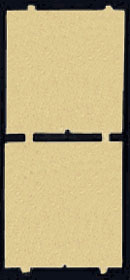
Attleboro Perfs on Washington-Franklins
Number 343, 344 Horizontal Perforations
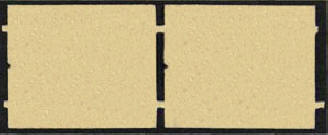
Attleboro Perfs on the Alaska-Yukon
Number371 Vertical Perforations
Brinkerhoff Perforations 1909-1916
The Brinkerhoff Company originally produced their coil stamps in Sedalia, Missouri, and received licenses to operate their machines in Missouri, Nebraska, Iowa, South Dakota, Colorado, Wyoming, Montana, Idaho, Utah, Nevada, Arizona and New Mexico. It is not certain in which cities Brinkerhoff had offices, but in 1909 an office in Denver was listed in the city directory. In 1910 the company moved from Sedalia to Lyons, Iowa. The company operated under a variety of names, including at least the following: the "Nebraska-Iowa Stamp Vending Company", "Brinkerhoff Stamp Vendor", "Postal Vending Manufacturing Co." and possibly the "Tri-State Stamp Vending Company".
The type I stamps have four 1.8mm in diameter holes uniformly spaced 3.2mm apart and no slits. All of the type II stamps have two larger 2.3mm diameter holes spaced 12.2mm apart and an overall length of 16.8mm. The type II have no slits, the type IIa have one long slit (about 9.7mm) between the holes and two shorter slits outside the holes, and the type IIb have two shorter slits (2.5-3mmm) between the holes and two short slits outside the holes. The holes on all of the Brinkerhoff stamps were applied to vertical strips of stamps prior to being placed in the vending machines. The slits were added in the vending process to aide the separation of stamps from the vending machine.
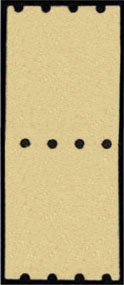
Brinkerhoff Type I
314, 320, 320a, 343, 344, 345, 346, 347
368, 371, 383, 408, 409
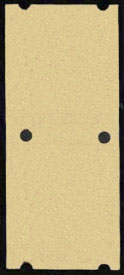
Brinkerhoff Type II
314, 320, 320a, 343, 344, 345, 346, 347
368, 371, 373, 383, 384, 408, 409
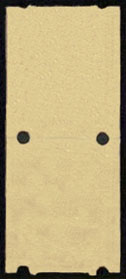
Brinkerhoff Type IIa
314, 320, 320a, 343, 344, 345, 346, 347
368, 371, 383, 384, 408, 409
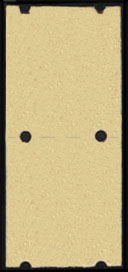
Brinkerhoff Type IIb
314, 320a, 343, 344, 345, 346, 347
368, 383, 384, 408, 409
Farwell Perforations 1911-1917
The John V. Farwell Company was a wholesale dry goods firm operating out of Chicago. In 1908 it began using the Schermack stamp-affixing machine to handle its heavy volume of mail. By 1911 it was decided that rather than paying the Mailometer Company a 50¢ per roll surcharge for their Schermack III coils, they might be able to produce their own coils to use in the Schermack machines at a cost saving. The large number of varieties in this group reflects the amount of experimentation that went into getting the stamps to feed properly in the Schermack machine. The nomenclature for these is as follows: The first number describes the number of holes at top and the last number the number of holes at bottom. The letter in the middle describes the spacing, where "A" describes a narrow spacing and "B" a wide spacing. All holes are 1.5mm in diameter, vertically aligned and spaced a more or less consistent .5mm apart.
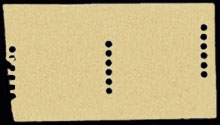
Farwell Group I - 6 or 7 Holes
Found on Number 384
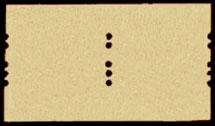
Farwell 2A3
Found on Number 384
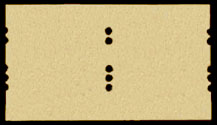
Farwell 2B3
Found on Number 383, 384
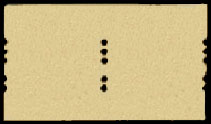
Farwell 3A2
Found on Number 383, 384
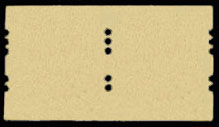
Farwell 3B2
Found on Number 384
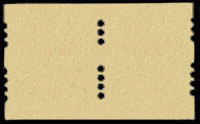
Farwell 3B4
Found on Number 383, 384
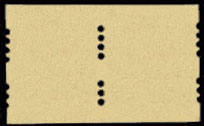
Farwell 4B3
Found on Number 383, 384
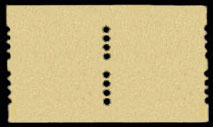
Farwell 4A or 4A4
Number 343, 344, 368, 383, 384, 408, 409, 482
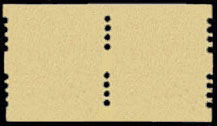
Farwell 2B3
Found on Number 383, 384
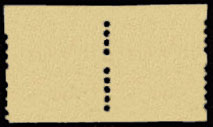
Farwell 4A5
Found on Number 383, 384, 408, 409
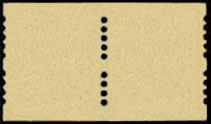
Farwell 5A4
Found on Number 408, 409
International Vending Machine Company Perforations 1906-1908
The International Vending perforations are normal looking, continuous, round, generally well aligned 1mm in diameter holes with irregular spacing. They have a distinctive look with a variable tendency to slant from right to left as the result of having been made one row at a time using a single-stroke perforator. The proper gauge is approximately 12½ and examples that have gauge 13 perforations are not International Vending coils. According to Steven Belasco, there are no known genuine examples of the 1908-1909 imperforate issues, Numbers 343-347.
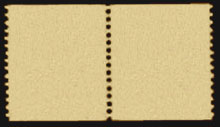
International Vending Machine Coil
perf 12.5
Found on Number 320
Mailometer Perforations 1909-1918
The Mailometer type I has holes 1.95mm in diameter spaced 1.2mm apart with a total length of 17.7mm, which distinguishes them from the type Ia perforations by the spacing, the Ia's are 1.15mm apart with an overall length of 17.45mm. The Mailometer type II again has 1.95mm diameter holes spaced 1.15mm apart, but the holes run continuously, with typically eight holes per stamp. The Mailometer type III has continuous perforations, but they are a smaller 1.5mm in diameter and are spaced 1.5mm apart. The Mailometer type IV has five distinctively larger 2.2mm diameter holes spaced 1.1mm apart, with an overall length of 15.5mm. The Mailometer type V is a continuous perforation with 1.8mm holes spaced 1.35mm apart, with some minor variation between spacing.
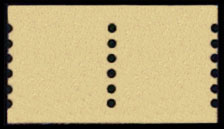
Mailometer Type I (17.7mm)
320a, 343, 344, 345, 346, 347, 383, 384
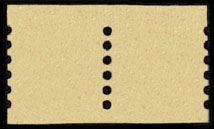
Mailometer Type IA (17.45mm)
320, 320b, 343, 344, 345, 346, 347
368, 371, 373, 383, 384, 408, 409
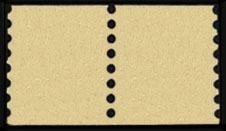
Mailometer Type II
320, 320a, 320b, 343, 344, 345, 346, 347
368, 371, 373, 383, 384
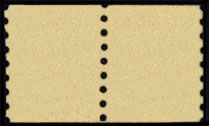
Mailometer Type III
320, 320a, 343, 344, 345, 346, 347, 368, 371, 373
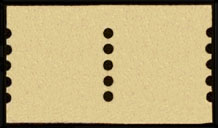
Mailometer Type IV
320, 320b, 343, 344, 345, 346, 347
368, 371, 373, 383, 384, 408, 409, 482, 483
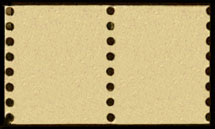
Mailometer Type V
383, 384
Schermack Perforations 1907-1927
The Schermack type I perforations may have six, seven or eight small holes, approximately 1mm in diameter and spaced .7mm apart. The early examples of these perforations have ragged holes while the later examples are much cleaner and more regularly spaced. The Schermack type II perforations have six holes 1.55 mm in diameter, larger than the type I holes, with uneven spacing. The Schermack type III perforation is the most common of all the vending and affixing machine perforations, having been used for twenty years. The oblong/rectangular hyphen holes are a distinctive 4.75mm high and 1.25mm wide with 3.25mm spacing. The size and spacing is quite uniform considering the length of production, although some of the early stamps have a slightly smaller spacing between the perforations. Every flat plate imperforate stamp illustrated above is known with Schermack type III perforations.
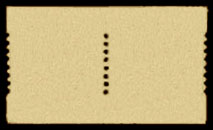
Schermack I - 8 Holes
314, 320, 320a, 315, 343, 344, 345, 346, 347, 368
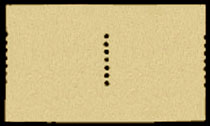
Schermack I - 7 Holes
Scott 314, 320, 320a, 368
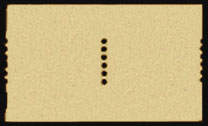
Schermack I - 6 Holes
Scott 314, 320, 320a, 368
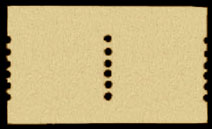
Schermack II - 6 Medium-size Holes
Found on Scott 314, 320, 320a, 315, 343
344, 345, 346, 347, 368, 383, 384
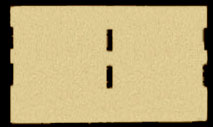
Schermack Type III - Hyphen-holes
314, 320, 314A, 315, 343, 344, 345, 346, 347, 368, 371, 373, 383, 384, 408, 409
481, 482, 482A, 483, 484, 531, 532, 533, 534, 534A, 534B, 535, 575, 576, 577, 611
U.S. Automatic Vending Company Perforations 1907-1915
The U.S. Automatic Vending Company perforations are notable in that they were fed through the vending machines by engaging the outside edge of the stamp via the 60 degree notches illustrated. The type Ia notches were spaced 15.5mm apart on either side of the stamp's margins with a 10.8mm slit centered between the notches. The type Ib notches were spaced 16mm apart with an 11mm slit centered between the notches. The type II notches were spaced 19.7mm apart with a 14.5mm slit centered between the notches. The type III notches were spaced 19.7mm apart on either side of the stamp, but instead of a slit, seven approximately 1.1mm in diameter holes spaced 1.25mm apart were placed between the notches. This is equivalent to 8½ gauge perforations. The USAV type III is the only private perforation found on the rare 1914 rotary imperforate, Number 459.
The first experimental coil illustrated below was made by adding notches to the ordinary perf 12 stamp, Number 319. These are very easy to fake by simply cutting notches into a vertical pair of the carmine NUmber 319. Certification is a must. The other experimental coil illustrated is somewhat similar to the type III USAV, but the perforations are 11.75 gauge Rosback.
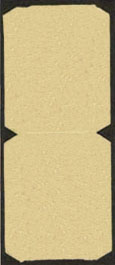
U.S. Automatic Vending Type Ia
Numbers 314, 320 (a,b), 315, 343, 344, 345, 346, 347
368, 371, 383, 384, 408, 409
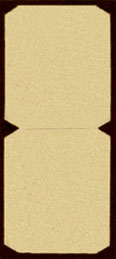
U.S. Automatic Vending Type Ib
Found on numbers 314, 320 (a,b), 343, 344, 345, 346, 347
368, 371, 383, 384, 408, 409
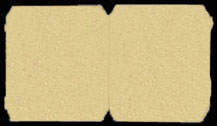
USAV Type II
Numbers 314, 320, 320b, 315, 343, 344, 345, 346, 347
368, 371, 373, 383, 384, 408, 409
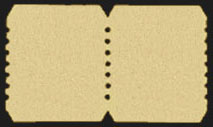
USAV Type III
Numbers 314, 320, 320b, 315, 343, 344, 345, 346, 347
368, 371, 373, 383, 384, 408, 409, 459
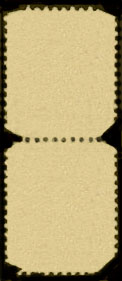
USAV Experimental First Coil
Numbers 319 and possibly numbers 300 (Miller Collection)
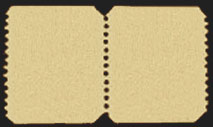
USAV Experimental
Rosback Perforations - Number 368
Further reading:
Guide to United States Vending and Affixing Machine Perforations 1907-1927 - by Steven Belasco
Stamp Machines and Coiled Stamps - by George P. Howard
United States Coil Issues 1906-38 - by Martin A. Armstrong
The Dr. Joseph Agris Gold Medal Collections of United States Coil Issues - Shreve's Philatelic Galleries
United States Postage Stamps 1902-1935 - by Max G. Johl





